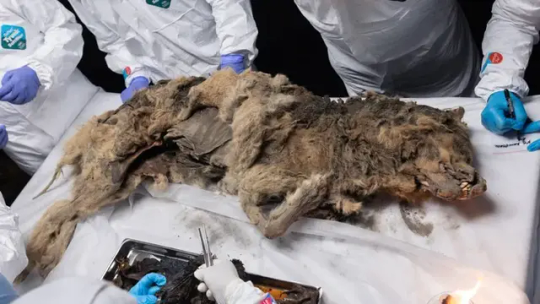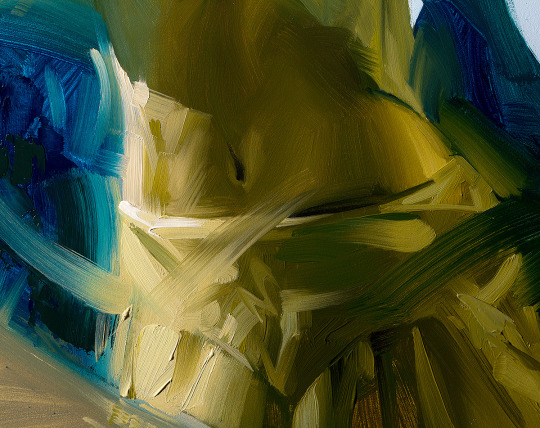#microbial contamination
Explore tagged Tumblr posts
Text
Blood pressure medication recalled over fears of 'microbial contamination'
A blood pressure medication has been recalled from suppliers due to possible “microbial contamination”. Amlodipine is a calcium channel blocker used to treat high blood pressure and can cut the risk of heart disease, heart attacks and strokes. It works by relaxing and widening blood vessels, making it easier for the heart to pump blood around the body. A notice issued by the Medicines and…
0 notes
Text
Fighting Dirty Weed Through OCal Cannabis Certification
The introduction of regulated medical and adult-use cannabis markets was supposed to guarantee that legal weed was clean weed, but somewhere along the line that message got reinterpreted as legal weed is tested weed, which is supposed to mean the same thing, but, as the now infamous Los Angeles Times/Weed Week story on pesticide use exposed, sadly does not, at least some of the time. The actual…
#California#Coastal Sun#Colorado#cultivation#Darren Story#extraction#Jetty Extracts#microbial contamination#New Jersey#New York#OCal Certification#pesticides#Ron Gershoni
0 notes
Link
Space Nuts Episode: Ryugu's Microbial Mystery, Martian Moon Origins, and Galactic Collisions Join Andrew Dunkley and Professor Fred Watson as they explore the latest cosmic revelations. From unexpected microbial contamination of Richie asteroid samples to a groundbreaking theory on the formation of Mars's moons, and the first results from a new instrument on the William Herschel Telescope, this episode is packed with stellar insights and astronomical wonders. Episode Highlights: - Richie Asteroid Contamination: Delve into the challenges of keeping extraterrestrial samples free from Earth's microbes. Despite stringent sterilisation efforts, Richie samples returned by Hayabusa2 show signs of terrestrial contamination, raising questions about planetary protection protocols. - Martian Moons' New Origin Theory: Discover a fresh perspective on how Phobos and Deimos may have formed. A new model suggests that these moons originated from debris of an asteroid that broke apart due to Mars's gravitational forces, offering an alternative to previous impact and capture theories. - Galactic Collisions Unveiled: Explore the first findings from the WEAVE instrument on the William Herschel Telescope. By studying Stefan's Quintet, astronomers reveal the staggering speeds of shock waves from colliding galaxies, shedding light on cosmic interactions and future Milky Way-Andromeda collision scenarios. For more Space Nuts, including our continually updating newsfeed and to listen to all our episodes, visit our website. Follow us on social media at SpaceNutsPod on facebook, X, YouTube, Tumblr, Instagram, and TikTok. We love engaging with our community, so be sure to drop us a message or comment on your favourite platform. For more Space and Astronomy News Podcasts, visit our HQ at www.bitesz.com. Become a supporter of this podcast for extended commercial-free episodes and more. Visit our Support page for options: spacenutspodcast.com/about Stay curious, keep looking up, and join us next time for more stellar insights and cosmic wonders. Until then, clear skies and happy stargazing. 00:00 - Andrew Dunkley: Coming up on this edition of Space Nuts 01:15 - This episode will be officially released two days after your 800th birthday 02:29 - Justin Jackson says Ryugu samples show effort to keep them clean has failed 12:12 - If that can happen in a room that's designed not to allow it 12:47 - New theory put forward about origin of moon's phobos and Deimos 21:22 - Andrew Dunkley says spherical potatoes could be useful in space missions 22:46 - Fred looks at an instrument connected to the William Herschel telescope 26:45 - Professor Gavin Dalton has been working on the William Herschel Telescope 31:30 - We've got similar collision speeds as Andromeda. ✍️ Episode References Imperial College London [imperial.ac.uk](https://www.imperial.ac.uk/) Meteoritics and Planetary Science Journal [wiley.com](https://onlinelibrary.wiley.com/journal/19455100) phys.org [phys.org](https://phys.org/) Durham University [durham.ac.uk](https://www.dur.ac.uk/) NASA Spaceflight [nasaspaceflight.com](https://www.nasaspaceflight.com/) JAXA (Japanese Aerospace Exploration Agency) [jaxa.jp](https://www.jaxa.jp/) William Herschel Telescope [ing.iac.es](http://www.ing.iac.es/astronomy/telescopes/wht/) Isaac Newton Group of Telescopes [ing.iac.es](http://www.ing.iac.es/)
#and#asteroid#astronomy#collisions#contamination#deimos#exploration#galactic#herschel#mars#microbial#moons#news#phobos#planetary#ryugu#samples#space#telescope#william
0 notes
Text
Canada recalls tattoo inks due to contamination concerns

Health Canada has issued a warning regarding a recall of certain tattoo inks that may pose a risk of skin infection.
Two types of water-based tattoo pigments from the brand Bloodline, specifically All Purpose Black and Carolina Blue, were recalled on Wednesday due to “potential microbial contamination.”
“The recalled products may be contaminated with certain microorganisms that may present a health concern to consumers,” Health Canada stated.
The agency highlighted that using contaminated tattoo ink “can pose a risk of skin infection.”
Approximately 120 units of the affected products were sold in Canada until August.
Read More: https://theleadersglobe.com/life-interest/health/canada-recalls-tattoo-inks-due-to-contamination-concerns/
#Canada recalls tattoo inks#contamination concerns#skin infection#potential microbial contamination#global leader magazine#the leaders globe magazine#leadership magazine#world's leader magazine#article#best publication in the world#news#magazine#business
0 notes
Text
Heads up, NeilMed Pharmaceuticals’ has issued a precautionary recall of over 89,000 bottles of NasoGel Spray due to possible microbial contamination.
These bottles would have been available for purchase through 2024.
This initial recall was issued last week as of February 5th 2025 but the new prevention.com article just dropped today which is what a friend sent to me.
The FDA says some of the following SKUs were included in the recall:
GSP30-2R-48-ENU-USL
GSP30-0R-96-ENU-USL
GSP30-ARA-INTL
GSP30-SWE-INTL
GSP30-ENG-INT
GSP30-MAL-INTL
GSP30-SPA-INT
The affected product was sold in 20 states and also sold in the countries of Ireland, Mexico, and the United Kingdom
6K notes
·
View notes
Text
Do You Have a Nose for Wine Faults? Take the Quiz.
Do You Have a Nose for #WineFaults? Take the #Quiz. #somm #winelover #corktaint
Good or Bad wine experience Understanding and identifying faults in wine is crucial for both novice and seasoned enthusiasts. Wine faults can significantly diminish the overall enjoyment of a bottle, affecting its aroma, taste, and texture. Common faults include cork taint, oxidation, and microbial contamination, each imparting undesirable characteristics to the wine. Recognizing these faults,…

View On WordPress
0 notes
Text
The food pathogen testing market size is predicted to grow at a CAGR of 8.4% between 2023 and 2028, reaching a value of $22.7 billion by 2028 from a projection of $15.1 billion in 2023.
#Food Pathogen Testing Market#Food Pathogen Testing Market Report#Food Pathogen Testing Market Forecast#Food Pathogen Testing Market Trends#Food Pathogen Testing Market Size#Food Pathogen Testing Industry#Pathogen Detection Services#Microbial Hazard Assessment#Food Safety Verification#Pathogen Outbreak Prevention#Contaminant Testing Solutions#Food Safety Assurance#Pathogen Identification#Microbial Threat Detection#Pathogen Testing Protocols#Food Safety Compliance
0 notes
Text

Revolutionizing Environmental Restoration with Delta Remediation
A New Dawn for Eco-Conscious Environmental Remediation Delta Remediation was conceived out of an unwavering commitment to foster sustainable and eco-friendly solutions for environmental restoration. Anchored by the conviction that future generations deserve a healthier planet, Delta Remediation has blazed a trail as a trailblazer in the sector. By launching a series of groundbreaking products and services, the company has effectively confronted hydrocarbon contamination in both soil and water.
The Pillars of Delta Remediation: Sustainability, Innovation, and Dedication The driving forces behind Delta Remediation's actions are its foundational principles: the pursuit of sustainable environmental solutions, relentless innovation, and a resolute commitment to ecological welfare.
A Close Look at Delta Remediation’s Groundbreaking Technology The BioLogix Solution by Delta Remediation represents the company’s technological prowess and innovative spirit.
BioLogix Salt Binder: The Vanguard of Salt Remediation This product stands at the forefront of environmentally-friendly solutions to rampant salt-related environmental challenges.
BioLogix Surfactant: An Eco-Compliant Hydrocarbon Liberator Crafted to free hydrocarbons from soil and usher them to the surface, this biodegradable surfactant is neither ethoxylated nor butyl-based, underscoring its eco-compliance.
BioLogix Microbes: The Microscopic Solution The BioLogix Surfactant is amplified by BioLogix Microbes, a powerful concoction of live Pseudomonas bacteria strains. These microbes possess an innate knack for degrading hydrocarbons, cementing their status as a crucial part of the BioLogix solution.
ScreenLogix TPH Test Kit: The Quick Contamination Assessor Delta Remediation’s innovative streak extends to the ScreenLogix Total Petroleum Hydrocarbon (TPH) soil test kit. This ingenious device empowers users to promptly identify the nature and level of hydrocarbon contamination in soils.
The Comprehensive Suite of Services by Delta Remediation Delta Remediation offers an extensive range of services to combat a myriad of environmental challenges.
Soil Remediation: The War Against Soil Contaminants The company takes pride in its flagship service – soil remediation, aimed at purging soil of pollutants such as hydrocarbons, heavy metals, pesticides, cyanides, volatiles, creosote, and semi-volatiles.
Bioremediation: Bacteria to the Rescue Here, bacteria serve as absorbents and decomposers of hydrocarbons and other pollutants. This technique proves highly effective in soils that uphold a temperature of approximately 70 degrees F and receive periodic rainfall for optimal moisture.
Thermal Soil Remediation: Evaporating Impurities This service heats up the contaminated soil in a Process Treatment Unit (PTU), causing the hydrocarbon impurities and water to evaporate.
Encapsulation: Isolation Over Removal As an alternative strategy to tackle soil contamination, encapsulation encloses contaminants to prevent their spread to uncontaminated areas.
Groundwater and Water Remediation: Preserving our Water Sources Delta Remediation adopts natural remediation processes to expunge contaminants from water and groundwater with minimal environmental impact, safeguarding our invaluable water resources.
Oil Spill and Sulfolane Remediation: Minimizing Ecological Damage Delta Remediation's expertise extends to managing oil spills and sulfolane contamination, with a focus on mitigating environmental harm and protecting local ecosystems.
The Delta Remediation Promise: A Blend of Innovation and Responsibility Innovation is the lifeblood of Delta Remediation. The company ceaselessly ventures into the unexplored territories of environmental remediation, delivering not just effective but also sustainable solutions.
A Strong Advocate for Sustainability Delta Remediation endorses remediation over relocation as a more sustainable and responsible response to environmental challenges. This ethos, coupled with stringent safety and quality norms, cements their standing as pioneers in environmental remediation.
Conclusion Delta Remediation persistently challenges established norms and redefines the standards of environmental remediation. Given their unwavering dedication to creating a cleaner, safer planet, the future of Delta Remediation promises to be as innovative and impactful as its illustrious past.
#Environmental Restoration#Delta Remediation#Sustainable Solutions#Eco-Friendly Remediation#Innovation in Environmental Restoration#Hydrocarbon Contamination#BioLogix Solution#Salt Remediation#Eco-Compliant Surfactant#Microbial Remediation#Soil Testing#Soil Remediation#Bioremediation#Thermal Soil Remediation#Encapsulation#Water Remediation#Oil Spill Remediation#Sulfolane Remediation#Sustainability Advocate#Remediation Over Relocation#Innovation in Remediation#Eco-Conscious Restoration#Groundbreaking Technology#Environmental Challenges#Future of Environmental Remediation
0 notes
Text

Contrasting Bioremediation Techniques: Spotting the Differences
Remediation is the process of removing contamination from water and soil, and bioremediation is a subset of this process that involves the use of living organisms to eliminate harmful pollutants in contaminated areas. Bioremediation techniques can be confusing, as some methods stimulate naturally occurring organisms to break down toxic chemicals and pathogens, while others introduce microorganisms into the environment to achieve remedial goals. There are two types of bioremediation techniques: biostimulation and bioaugmentation. These should not be confused with the two main methods of soil remediation (in-situ/ex-situ), which refer to how a remediation treatment is carried out and not the actual biology involved.
Biostimulation techniques encourage natural organisms to consume pollutants. Normally, these naturally occurring microorganisms could take decades to degrade contaminants, but by modifying the environment through the addition of nutrients, this time can be reduced. Nutrients and electron acceptors such as phosphorus, nitrogen, oxygen, or carbon are added to the environment to stimulate biodegradation. Examples of biostimulation techniques include biosparging and bioventing. Bioventing is the injection of high-pressure air (oxygen) into the soil or unsaturated vadose zone to enhance aerobic biodegradation. Biosparging is the injection of air into the saturated zone of the soil matrix or groundwater table to stimulate degradation.
Bioaugmentation involves the addition of exogenous microbial strains to supplement the degradation capacity of indigenous microbial populations. Site assessments are conducted to determine the chemical structure and concentration of contaminants, the size and nature of existing microbial populations, and the nature of the physical environment before the right bioaugmentation technique can be conducted. Effective bioaugmentation technology must be able to maintain genetic stability and viability during storage, survive in foreign and hostile environments, effectively compete with indigenous microorganisms, and move through the pores of the sediment to the contaminants. Nutrient application alone will not produce the desired remediation results, but augmenting contaminated soils with aggressive bacteria will often produce desired results in as little as 30 days.
While both techniques have applications in the remediation industry, bioaugmentation reduces the risk and uncertainty often associated with biostimulation. Delta Remediation is a worldwide leader in the area of bioremediation, offering proprietary remediation technology (BioLogix) and innovative solutions (ScreenLogix Rapid TPH Test) to meet site needs. To learn more, contact Delta Remediation at [email protected] or 780-962-7991.
#bioremediation#biostimulation#bioaugmentation#environmental science#soil remediation#microbial populations#contaminated areas#pollutants#indigenous microorganisms#exogenous microbial strains#Delta Remediation#BioLogix#ScreenLogix Rapid TPH Test.
0 notes
Text

A Mummified 44,000-Year-Old Wolf Found in Siberian Permafrost
Scientists perform necropsy on an ancient wolf pulled from Russian permafrost that may still have prey in its stomach.
In a first-of-its-kind discovery, a complete mummified wolf was pulled from the permafrost in Siberia, after being locked away for more than 44,000 years. Scientists have now completed a necropsy (an animal autopsy) on the ancient predator, which was discovered by a river in the Republic of Sakha — also known as Yakutia — in 2021.
This is the first complete adult wolf dating to the late Pleistocene (2.6 million to 11,700 years ago) ever discovered, according to a translated statement from the North-Eastern Federal University in Yakutsk, where the necropsy was performed. The discovery, scientists say, will help us better understand life in the region during the last ice age.
Photos from the necropsy show the wolf's mummified body in exquisite detail. Animals are preserved in permafrost through a type of mummification involving cold and dry conditions. Soft tissues are dehydrated, allowing the body to be preserved in a frozen time capsule.
Researchers took samples of the wolf's internal organs and gastrointestinal tract to detect ancient viruses and microbiota, and to understand its diet when it died.
"His stomach has been preserved in an isolated form, there are no contaminants, so the task is not trivial," Albert Protopopov, head of the department for the study of mammoth fauna of the Academy of Sciences of Yakutia, said in the statement. "We hope to obtain a snapshot of the biota of the ancient Pleistocene."


He added the wolf, which tooth analysis revealed was male, would've been an "active and large predator," so they will be able to find out what it was eating, along with the diet of its victims, which "also ended up in his stomach."
Another key aspect of the necropsy is looking at the ancient viruses the wolf may have harbored. "We see that in the finds of fossil animals, living bacteria can survive for thousands of years, which are a kind of witnesses of those ancient times," Artemy Goncharov, who studies ancient viruses at the North-Western State Medical University in Russia, and is part of the team analyzing the wolf, said in the statement.
He said the research project will aid their understanding of ancient microbial communities and the role of harmful bacteria during this period. "It is possible that microorganisms will be discovered that can be used in medicine and biotechnology as promising producers of biologically active substances," he added.
The wolf necropsy is part of an ongoing project to study the wildlife that lived in the region during the Pleistocene. Other species examined include ancient hares, horses and a bear from the Holocene. The team plans to study the wolf's genome to understand how it relates to other ancient wolves from the region, and how it compares to its living relatives. The team now plans to start studying another ancient wolf discovered in the Nizhnekolymsk region of northeast Siberia in 2023.
By Hannah Osborne.





#A Mummified 44000-Year-Old Wolf Found in Siberian Permafrost#mummified wolf#Republic of Sakha#Yakutia#late pleistocene#ancient animals#ancient artifacts#archeology#archeolgst#history#history news#ancient history#ancient culture#ancient civilizations
332 notes
·
View notes
Text




Cassini Spacecraft Oil, 18 x 24 in, 2018 In our pursuit to understand the solar system we find ourselves in, we sent an explorer on a billion mile journey to the Saturnian system. The Cassini Spacecraft sent back amazing new data and images of Saturn and it's 62 known moons, 46 of which were unknown when Cassini left. We learned that the moon, Enceladus, may have everything it needs to support life deep in it's global ocean, Titan has a liquid methane sea, and so much more.
In 2017, low on fuel after twenty years in space and so much information gained, Cassini took several dives between Saturn and it's rings to learn a little more before it's mission came to an end. To avoid possible microbial contamination of any of Saturn's moons, Cassini dove and burned up in Saturn's atmosphere, while sending back it's final data. Prints: https://robrey.storenvy.com
584 notes
·
View notes
Text
I'm fascinated by microbiomes, the communities of bacteria, unicellular fungi, and other tiny living beings that populate various parts of animal bodies. We literally can't function without them; our gut micriobiome, for example, is crucial to our ability to digest food.
It's long been thought that the brain was kept sterile by the blood-brain barrier. However, this recent study shows that fish have a brain microbiome, so it's not entirely out of the realm of possibility we might, too. It's tough to study, because accessing the brain opens up the risk of outside contamination confounding the results of the study.
But if it is true, the implications could be huge. There's already a growing body of evidence that our gut microbiome has a significant impact on our mental health and mood through what's known as the Gut-Brain Axis. This is a series of connections between these parts of the body that includes the nervous, endocrine, immune, and other systems. Given there's about one microbial cell for every human cell in our bodies, it wouldn't be at all surprising that our microbial communities have a bigger influence on our lives than we think.
Because it's quite dangerous to study a living human brain, it will be difficult to determine whether we do have cranial microbiomes. But I'll be keeping my eye out for any further news along these lines.
#microbiome#microbes#microbiology#health#mental health#gut health#mental illness#brains#science#scicomm#nature#animals#wildlife#holobiont
132 notes
·
View notes
Text
Panspermia is the hypothesis that life can survive the transfer between planetary bodies as a secondary path for life to get started on planets throughout a solar system. The discovery of extraterrestrial life on asteroids or within meteorites would have profound implications for understanding the origins and distribution of life in the universe. Reports of microorganisms found in chondritic meteorites have long fueled debates about extraterrestrial life reaching Earth and possibly as an origin of life here. While studies have concluded these microbial signatures are just terrestrial contaminants, arguments for them being extraterrestrial travelers have continued.
Continue Reading.
61 notes
·
View notes
Photo

Commander Eight: Suited up [Archframe]
General The conception of the Archframes originated from the Architype Project Initiative (AP). These highly engineered exosuits, enhanced with biomechanical attributes, eliminate the need for modern-day spacesuits and life support systems by integrating all necessary survival systems within themselves. Archframes are capable of keeping their operators oxygenated and nourished, even during spacewalks, making them indispensable for deep-space exploration and planetary expeditions. The Architype Project developed multiple types of Archframes primarily for the transgenic Architypes, each model sharing fundamental functions while allowing for specialized modifications. As an Architype, individuals could enhance their Archframes with additional physical modifications (MODs) designed to serve specific operational needs-, ranging from auxiliary manipulators to integrated laser attachments for precision work. In total, only thirty prototypes were manufactured with permanently installed non-biological MODs, making these particular Archframes distinct from standard models. Only five of them were equipped with special neurological links to their operators, one of which belongs to Architype 008. Eight‘s Archframe The Archframe of Architype 008 is one of only five highly specialized prototypes built by AP, equipped with a wide array of MODs and functionalities. Among all Archframes, Eight’s is especially notable for its sleek and distinct design, tailored to her preferences. Given that Architypes spent prolonged periods inside their Archframes during missions, some (such as Eight) requested personalized designs that reflected their individuality. Having served for years in AP’s design sector before volunteering to the spacefaring division, Eight had significant influence over the visual and functional aspects of her Archframe. While some design elements may not appear strictly necessary, AP‘s Archframe engineers ensured full functionality without compromising efficiency, resulting in a uniquely reliable exoskeleton. Like all standard Archframes, Eight’s suit is equipped with two auxiliary arms, an integrated bionetic visor, and an Archlink. However, its primary design prioritizes strength and endurance over agility. Built for heavy lifting and transportation, Eight’s Archframe compensates for reduced mobility with its additional limbs, allowing her to navigate even the most challenging environments effectively. All core functions remain consistent with standard models: - It provides Eight with sustained nutrients and oxygen, eliminating the need for external supplies. - It operates efficiently across various planetary conditions and extreme environments. - It is fully sealed, featuring chemical-resistant films that render the suit sterile and impervious to microbial contamination. - It is self-sufficient, requiring minimal maintenance unless damaged. What sets Eight’s Archframe apart, however, is its advanced biological integration. A fully symbiotic link Unlike conventional Archframes, which merely simulate physiological and psychological synchronization through the Archlink, Eight’s frame is able to form a direct biological connection to her nervous system through bionetic implants in her body. This means her suit is not just an extension of her body-, it feels as natural as if it were her own flesh. This depth of control provides an unparalleled sense of immersion, allowing her to experience sensations as though they originated from her own body. Most Architypes, having only operated standard models, would be unaware of how profound this difference is. However, this enhancement comes with a cost: The intensified sensory feedback makes Eight far more susceptible to psychological strain and hormonal instability. The suit’s dopamine-triggering effects can lead to dependency and addiction, similar to how certain stimuli create habitual behaviors-, and the enhanced strength and responsiveness blur the line between her own body and the exosuit, making it easy for her to lose awareness of her actual physical limitations. While this makes her an incredibly efficient operator, it also poses a significant mental challenge. Over time, Eight has learned to manage these effects, but prolonged use remains risky. Why was such a Prototype created? The answer is simple: for science. The Architype Project initiative prioritized pushing technological and biological boundaries, making Eight an invaluable subject for research. AP took measured risks to develop a suit that fully integrates with a human nervous system, studying its long-term effects on operators. The project's security measures evolved to address Archframe-related incidents, ensuring that even such extreme modifications were implemented responsibly and professionally. Now stranded in the Ember Galaxy, Eight continues to rely on her Archframe for protection during missions and simple quality-of-life utilities. Due to its symbiotic nature, many who encounter her perceive her as an alien with two skins or even bodies, fascinated by the seamless fusion between human and machine. Today, her Archframe is as familiar to her as ordinary clothing, and though she has adapted to its drawbacks, the benefits far outweigh the risks. In addition, the Archframe allows her to express a part of herself that she would otherwise keep hidden. At times, she simply wants to punch something without consequences to feel the impact, the resistance, yet remain unpained. Or run as fast as a cheetah to feel the wind rush along her face, and the weightlessness of her limbs carrying her across the land. This way, the suit provides an outlet for her frustrations and desires, granting her a rare sense of satisfaction and relief.
#aliens of ember#8illionsart#artists on tumblr#transentienceuniverse#my art#alien#original art#scifi#digital illustration#illustration#sci fi#speculative fiction#spec evo#science fiction#alien oc#art#original character#character design#originalcharacter#original characters#tentacles#robot oc#robots#robot#robot art#machine#sci fi and fantasy#mecha#cyborgs#posthumanism
21 notes
·
View notes
Text
Assorted Armored Core 6 thoughts
1: Iguazu as a character is just so fucking funny to me. Like here’s this pathetic little petty piece of shit who wants to be hot stuff but isn’t due to his own personal faults, and gets mad when he’s inevitably shown up. And then you come along and are better than him (which isn’t a high bar… I mean come on even his AC build is less than optimal) and for some reason that makes him lose his shit and now he hates you so much he’s willing to kill himself if it means killing you. Of all the people that broke him it was you, C4 621, Waltuh’s favorite little vegetable lobotomite. Michigan should have technically gotten that hatred out of him but no it’s you he hates.
2: I’ve seen some talk about what the “mealworms” the rubiconians eat are, and a lot of people think they’re tardigrades mutated by Coral, but I’d have to disagree. Coral isn’t a mutative substance, it’s just some anaerobic alien algae that explodes real good and can act like a supercomputer when in groups. It also might have a biochemistry toxic to humans since it can get us high and areas exposed to coral explosions are contaminated in some way, but it’s never been stated to directly tamper with genes. The anatomy of the mealworms also doesn’t match tardigrades that well and they only have a passing resemblance to them (their mouth anatomy is closer to that of a lamprey or hagfish, and they have too many legs). I think the mealworms might instead be alien fauna, but ones not native to rubicon that were instead brought in as livestock. Why not native to rubicon? Well the only other multicellular organisms we see in game are trees and grass that were almost certainly bought to rubicon by humans, and while rubicon 3 seems to be within the Goldilocks zone from its sun it’s definitely on the farther end of the spectrum. Every area (aside from grid, Xylem, underground, and atmospheric areas) has snow, except for where the Strider is seen, which is a desert. But desert doesn’t equal heat, it just means it’s a very dry place. Rubicon 3 might also not have a moon and we don’t know anything about its magnetosphere. Basically what I’m trying to say that rubicon 3 is a pretty tough place to live, and while multicellular life isn’t an impossibly given its conditions, it seems that the planet might only have microbial life.
3: A sort of follow up to the mealworm thing, but it seems like in the AC 6 universe humanity has discovered alien life, but never sapient ones. Any race other than humans is never mentioned, and coral is of human interest not because it’s an alien organism, but because it can act as a superfuel. Mealworms are likely also aliens. If this is all true then Coral might be the first truly sapient race encountered by humanity… and we’ve been using it as fuel and already almost rendered it extinct once… oops.
113 notes
·
View notes
Text
Possible medicinal plants in Beleriand part one /?
This is a resource I created upon commission for @creativity-of-death regarding medicinal plants that do have more evidence behind them with the treatment of wounds. Thank you again for the commission! Commission information in the bottom of my pinned post
Related post!
I am also very interested in both botany and herblore so I really enjoyed doing this. This post is heavy on plant information and light on world building but I absolutely plan on writing more detailed world building!
This is going to focus primarily on the plant thyme which are primarily used to treat superficial wounds.
Some notes first!
Elves do not suffer full body infection under most circumstances however, wounds can still worsen, become inflamed, and there are factors that can prevent healing which herbs like these can aid in in. I’m going to make a longer post about my thoughts on immunology and elves and the differences between them and humans going through different aspects of human immune systems and the similarities and differences with elven ones but essentially, while I do believe there are microbial infections in the middle earth, elves are largely immune to communicable diseases that affect humans! however, they are not immune to all poisons, venoms and toxins, as we know from certain examples in canon, for example Aredhel’s death
Ethnobotany is notoriously difficult to research as there are so many conflicted sources and it is often difficult to tell what species have been studied, tested, and proved to have medicinal value, which have been proven to not have significant use in this regard and which have simply not been the subject of much research. Especially when it comes to traditional medicinal practices from marginalized cultures and peoples, information is often dismissed, buried or lost. Oral histories or works in translation are often not included in English literature research.
Second note: understanding of the body and of medicine varies tremendously in my opinion throughout the timeline of middle earth. The information included here is largely the information that we know from modern studies, and the language will not necessarily be the same terms of understanding the characters have, for example boards, like “anti-microbial properties” Would largely be understood by first age, elves, and humans to mean plants that assist in the healing of wounds, prevent them from worsening and prevent illness from falling as a result. Throughout history, we see terms like contamination, blood poisoning, and corruption in place of infection before germ theory was widely understood.
OK now for the plants!
Thyme has been proven in some forms to have significant microbial properties. They are some of the best well antimicrobial properties. Thymol a name for oil of thyme* is and has been used in pesticides and medical disinfectants.
Historically, bandages would be coated in oil of thyme to prevent infection, even before the processes of infection were understood. Thyme contains several different subspecies and tends to grow in Mediterranean climates however has been widely naturalized elsewhere.
In Beleriand it likely grew primarily in Ossiriand and Dorthonion but could easy be naturalized in other temperate regions.
* this compound is also found in other plants to varying degrees, but was named after the substance that was first extracted from common thyme
Wormwood, or Artemisia absinthium has also been studied fairly extensively and has been proven to have antimicrobial properties. I know you mentioned spiders and though it has never been tested on spider venoms, it is proven to have anti parasitic properties and has been used to kill other arachnids such as mites and ticks. Interestingly, it has been examined to have neuroprotective properties which might make it useful in antivenoms. These have not been studied as extensively as its antimicrobial properties however.
In Beleriand this is plant that can be easily naturalized throughout temperate regions, especially in fields and foothills. Dimbar, the region of Nargothrond, and the southern hills are some examples.
Calendula (common marigold)
Evidence has shown that topical application can aid in the healing of wounds and in preventing or treating infection. Tinctures and ointments are the most common forms. These flowers grow throughout the temperate world. Overuse could lead to endangerment/extinction easily. Mount Sinai Hospital’s online medical library discusses these properties as does the National Institute of Health. The properties seem to be well proven, especially by ethnobotanical standards!
Marigold primarily grows in warm regions, including warm temperate ones. In Beleriand it probably grew primarily in the west and central regions.
Common tormentil has mild astringent properties which can aid in blood stopping. Creeping jenny or field balm also has similar properties. These both grow throughout temperate climates though tend towards colder regions.
In Beleriand common tormetil could likely grow in Hithlum and in the plains of Eastern Beleriand. Creeping Jenny would likely be found near ponds such as near the Fen of Serech or Twilit Meres.
39 notes
·
View notes